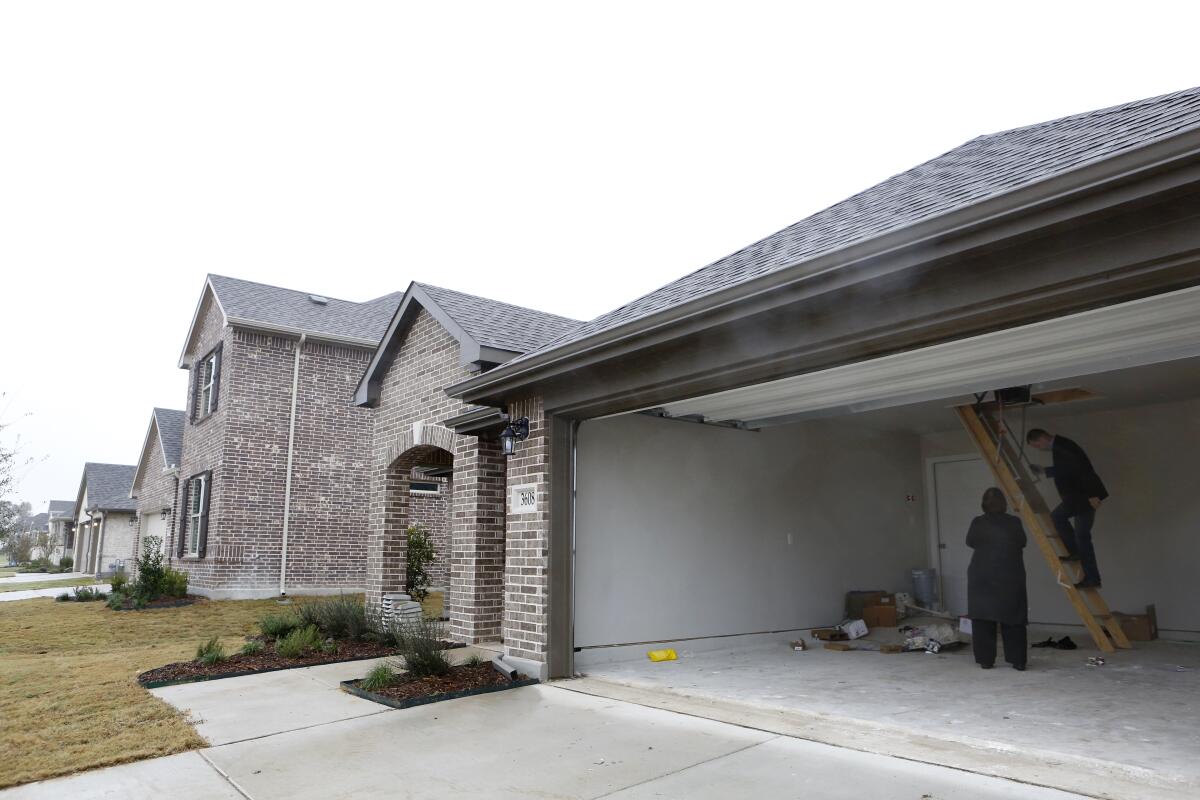Letters to the Editor: Yes, people want to live in the suburbs — and that’s a huge problem

- Share via
To the editor: Joel Kotkin’s piece on suburbs and housing affordability reminds one of the dictum that any halfway intelligent person can use statistics to say almost anything.
Kotkin wants to paint a happy face on sprawl. He describes urban density as “expensive,” as if the cost of a condo had to do with the floor plan rather than the regional supply and demand.
He says that the “appeal of the suburbs historically is affordability, especially for first-time homeowners.” Not true: The appeal of the suburbs historically in the U.S. was in the form of cheap loans to white families, and this is how white families could exempt themselves from the urban cultural melting pot.
As for the environment, we are currently seeing bee and bird populations collapse because humans are encroaching upon nature (the “urban fringe,” in Kotkin’s words), and the wilderness is being paved over with subdivisions and highways separating habitat from habitat.
A few parks here and there don’t matter if the wilderness shrinks by half.
John Lisovsky, San Francisco, and Karl Lisovsky, Venice
..
To the editor: California has an affordable housing crisis, but sprawl development is not the solution. Sprawl locks people into long commutes, increases wildfire risk and destroys habitats.
We need to increase affordable housing in communities that have remained exclusionary by up-zoning areas near public transit and mandating affordable units on site. This requires cities to build up, not out.
Developers argue that sprawl is cheap, but that’s because it’s subsidized by taxpayers who fund the roads, utilities and fire stations that are necessary for more exurbs. Our limited public resources should instead be invested in creating affordable housing in existing communities.
Sprawl also destroys our remaining wild places, which limits people’s access to nature and ruins habitat for threatened species like mountain lions.
The science is clear: Sustainable development requires up-zoning to provide more affordable housing near public transit, not sprawling exurbs.
Elizabeth Reid-Wainscoat, Los Angeles
The writer is an urban wildlands campaigner at the Center for Biological Diversity.
..
To the editor: I could not agree more with Kotkin. The only time there has been affordable housing in this state is when we built suburbs.
Infill housing is incredibly expensive. Increased density places demands on infrastructure that it was not meant to handle — meaning sewers, water lines and power facilities all need to be upgraded. It is why downtowns feel perpetually under construction.
As a result, developers have to make a certain profit to justify the additional expense along with the unknown costs of upgrading 100-year-old systems.
Jesse Cline, Santa Maria
..
To the editor: California is in a perpetual drought situation. Where will the water (and other infrastructure requirements) for these new suburban developments come from?
Ann C. Hayman, Westwood
More to Read
A cure for the common opinion
Get thought-provoking perspectives with our weekly newsletter.
You may occasionally receive promotional content from the Los Angeles Times.









